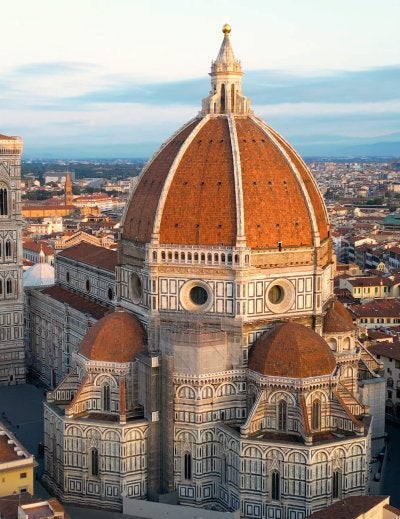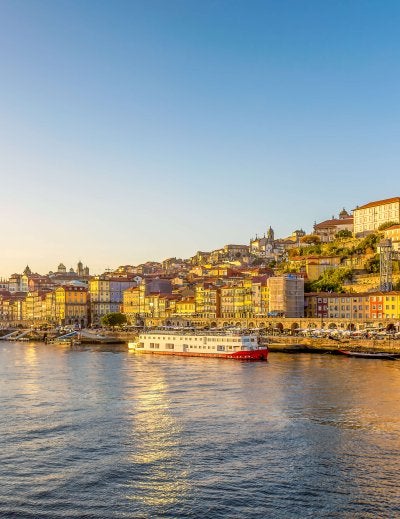
Mount Etna Travel Guide
Mount Etna rises dramatically above the eastern coast of Sicily, dominating the skyline with its vast slopes and ever-changing summit. As the highest active volcano in Europe and the tallest mountain on any Mediterranean island, it stands as one of Italy’s most impressive natural landmarks. With an elevation of about 11,165 feet and a base circumference of more than 85 miles, Mount Etna is a destination of immense geological, cultural, and historical importance.
A Natural and Cultural Wonder
Mount Etna was recognized as a UNESCO World Heritage Site in 2013 for its exceptional volcanic activity and scientific value. The protected area covers nearly 50,000 acres of uninhabited land, showcasing a wide variety of volcanic features, from cinder cones and lava flows to deep caves and the vast Valle del Bove depression.
The mountain’s fertile slopes support thriving vineyards, orchards, and forests, while its summit reveals a landscape that feels otherworldly. Etna is also deeply rooted in mythology. The ancient Greeks believed it was home to the Cyclops, the forge of Vulcan, and the prison of Typhon, a mythical giant trapped beneath the mountain.
Why Visit Mount Etna
A visit to Mount Etna offers something for every type of traveler, whether you’re drawn by its geological significance, scenic trails, or local flavors.
- Spectacular Landscapes: The scenery changes dramatically as you ascend—from lush forests to moon-like plains of black sand and hardened lava. On a clear day, you can see as far as the Ionian Sea and even mainland Italy.
- Volcanic Activity: Etna is one of the world’s most active volcanoes, often emitting smoke and minor eruptions. Watching the glow of lava against a starry sky from a safe distance is an unforgettable experience.
- Myth and History: Formed around 35,000 years ago, Etna’s eruptions have shaped Sicilian life for centuries. Its documented history of eruptions stretches back to 1500 BCE, making it one of the longest recorded volcanoes on Earth.
- Local Wine and Produce: The volcanic soil is incredibly fertile, nurturing vineyards that produce distinctive Etna DOC wines. Sampling these wines and other local delicacies is one of the highlights of visiting the region.
- Outdoor Adventures: Depending on the season, visitors can hike, bike, explore lava caves, or even ski on the snowy slopes during winter.
Getting to Mount Etna
The most popular access point is Rifugio Sapienza on the southern slope. It can be reached by car along the scenic SP92 road, about one hour from Catania or a little over an hour from Taormina.
A public bus departs daily from Catania’s main bus terminal (Piazza Giovanni XXIII) at 8:15 a.m., arriving at Rifugio Sapienza around 10:15 a.m. The return bus leaves at 4:30 p.m. Travelers coming from Taormina or Syracuse can take a train or bus to Catania and then continue to Etna from there.
The northern access point, Piano Provenzana near Linguaglossa, offers a quieter and more forested route. This area doesn’t have a cable car, but it’s great for hiking and jeep tours.
If you prefer not to drive, many guided tours include round-trip transportation from Catania, Taormina, or even Palermo, often combining Etna with wine tasting or cultural stops.
When to Visit
Mount Etna can be visited year-round, but the best time depends on what you want to do.
- Spring and Fall: Ideal for hiking, with mild temperatures and clear skies.
- Summer: Hot at sea level but pleasantly cool at higher elevations. Early mornings and evenings are best for exploring.
- Winter: From November to March, Etna becomes a ski destination with two small resorts—one near Rifugio Sapienza and another at Piano Provenzana. Snowshoeing and scenic winter walks are also popular.
Always check the weather and eruption reports before visiting, as access to the summit area can be restricted for safety reasons.
What to Do on Mount Etna
From Rifugio Sapienza (South Side)
Rifugio Sapienza is the main starting point for most visitors. The area has restaurants, cafes, souvenir shops, and parking. The Silvestri Craters, formed in 1892, are within walking distance and provide incredible views.
From here, you can take the cable car to about 8,200 feet, then continue by 4×4 bus up to roughly 9,200 feet. To go beyond that—toward the summit—you must join a guided hike, as self-guided access is limited to 9,200 feet for safety reasons.
Guided Tours and Summit Hikes
- Short Guided Hike (9,800 ft): Includes cable car, 4×4 transfer, and a guided walk to viewpoints near the Barbagallo Craters.
- Summit Tour (11,000 ft): A challenging but rewarding hike that reaches the active craters. Tours start early and last several hours, depending on conditions.
- Special Experiences: Many tours focus on sunset hikes, lava cave exploration, or wine tastings on Etna’s lower slopes.
From Piano Provenzana (North Side)
The northern route is quieter and greener, surrounded by pine forests and scenic trails. Jeep tours can take you to about 9,200 feet, followed by guided hikes to the summit. Popular routes include Monte Nero, Monti Sartorius, and Grotta del Gelo, where an underground glacier lies inside a lava cave.
Safety and Practical Tips
Mount Etna is one of the most closely monitored volcanoes in the world, and visiting is safe when you follow local regulations.
- Hiking above 9,200 feet requires a certified mountain guide.
- Avoid crater rims and follow all safety instructions.
- Be aware of altitude sickness, especially if driving up from sea level.
- Dress in layers, as temperatures drop quickly with altitude.
- Wear sturdy hiking boots and bring water, snacks, sunscreen, and sunglasses.
- A scarf or mask can help with wind and volcanic dust.
Nearby Attractions
After exploring Mount Etna, consider discovering more of the island’s highlights. Take a look at things to do in Sicily for ideas and travel inspiration.
- Etna Wine Route: Visit vineyards like Benanti or Murgo to taste wines made from grapes grown in volcanic soil.
- Honey Farms: Along the SP92 road, stop to try local honey made from wild mountain flowers.
- Alcantara Gorge: Located north of Etna, this natural canyon carved by ancient lava flows is perfect for a walk or swim in summer.
A Living Volcano and a Sicilian Icon
Mount Etna captures the essence of Sicily—powerful, fertile, and full of character. Its slopes sustain life, its eruptions shape the land, and its myths echo through history. Whether you hike to its craters, ski in winter, or simply admire it from afar, Mount Etna offers a rare encounter with nature’s raw energy and the spirit of the island itself.



